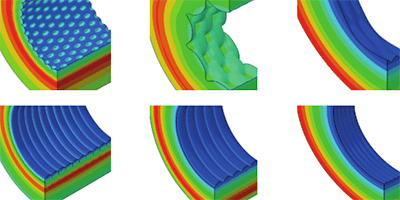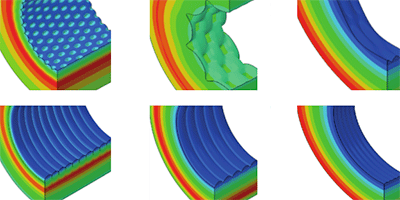Getting the Wrinkles Out
A few weeks into the development of a human embryo, the smooth tube of tissue that makes up the digestive tract begins to buckle, wrinkle and fold—an early step in the formation of the esophagus, stomach, and intestines. Understanding how such structural patterns develop could help scientists engineer replacement tissue or study esophageal and intestinal diseases. A new model of soft, tubular tissue explains the growth of many of the structures found in the inner lining of tube-shaped organs using only parameters related to the tube’s elasticity and geometry.
Pasquale Ciarletta at the Université Paris 6 and his collaborators modeled the two inner layers of tubular tissue—the endoderm and the mesoderm—as concentric, thick elastic tubes, and treated the thicknesses, elasticities, and growth rates as variables. This approach allowed them to model the mesoderm in a more realistic way than other approaches, which have treated the mesoderm wall as a rigid scaffold.
With numerical simulations, the team mapped out the wrinkles, folds, and protrusions that can form in the endoderm layer for different relative radii and elasticities of the two tubes. They found that a confining mesoderm—one that is either stiff or too narrow—favors folds along the tube’s circumference, like those found in the esophagus. In contrast, folds form along the tube’s length when the mesoderm is weaker, as in the intestine. Their model could be used to study the changing structure of the esophageal lining that results from certain pathologies, including food allergies.
This research is published in Physical Review Letters.
–Jessica Thomas





